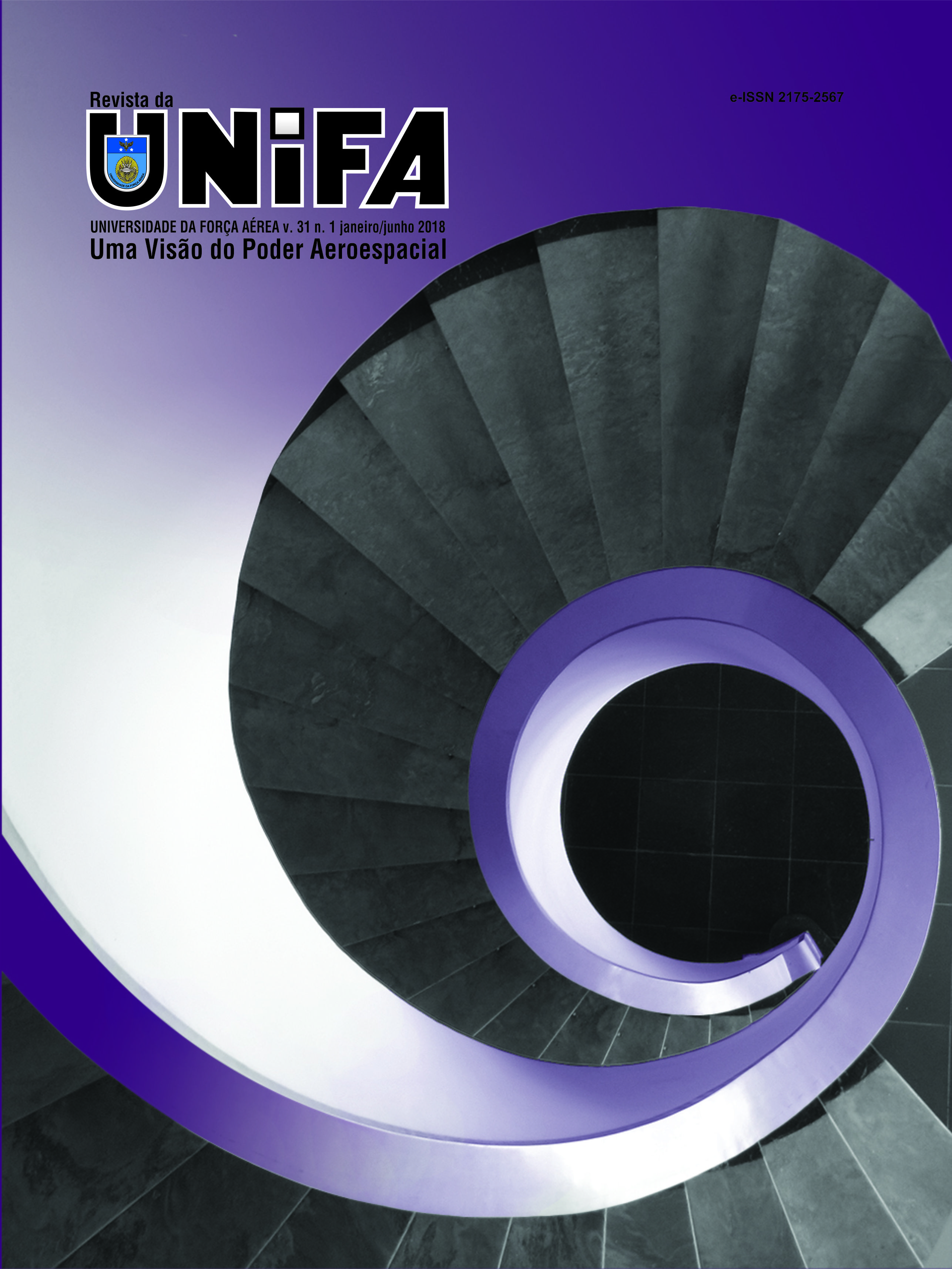Development of a Normobaric Hypoxia Chamber for Studies in Human Physiology
DOI:
https://doi.org/10.22480/revunifa.2018.31.476Keywords:
Normobaric hypoxia chamber, Physiological changes, Training in hypoxia, Flight safetyAbstract
One of the great challenges faced by aviators is to realize the individual physiological effects caused by hypoxia. Hypoxia is the condition that the human body faces when it does not receive an adequate supplement of oxygen in the body tissues and cells. Deprivation of appropriate oxygenation leads to reduced cognitive and visual capacity, thereby leading to unconsciousness and even death in extreme cases. It is therefore required that aviators receive training to recognize such symptoms to ensure flight safety. This paper describes the development of a portable and low cost Normobaric Hypoxia Chamber (NHC). The NHC provides training in situations of hypoxia for aviators. To be portable and cost-effective, the NHC was constructed using a PVC pipe structure, coated with transparent vinyl canvas and fitted with latches to access and seal the internal atmosphere of the chamber from the rest of the environment. The NHC control system was designed to acquire signals from O2 and CO2 sensors, to process and control the hardware of the gas mixture actuators, which allow the oxygen concentration within the NHC to be changed, and to homogenize the air within the NHC and carry out the exhaustion of the interior of the chamber. The results show that the development of the CHN has fulfilled the prerequisites established in the project. The NHC can be used to train aviators under controlled conditions and to carry out research on human physiology related to hypoxia.
References
THE AVIATORS, terceira temporada, sexto episódio: anatomy of a commercial flight.Produção de FourOints Television, 2012. BRASIL. Comando da Aeronáutica. Instituto de Aviação Civil. Aviação Civil: manual de curso piloto comercial – avião. Brasília – DF: Instituto de Aviação Civil, 2013a. 189 p.
______. Instituto de Medicina Aeroespacial Brigadeiro Médico Roberto Teixeira. Instrução na câmara hipobárica. 2013b. Disponível em: www2.fab.mil.br/imae/index.php/imagens/event/ CmaraHipobrica#2. Acesso em: 4 set. 2014.
CABLE, G. G. In-flight hypoxia incidents in military aircraft: causes and implications for training. Aviation, Space, and Environmental Medicine, v. 74, n. 2, p. 169-172, 2003. Disponível em: http://www.ingentaconnect.com/content/asma/ asem/2003/00000074/00000002/art00010. Acesso em: 4 fev. 2016.
COLORADO ALTITUDE TRAINING. Altitude simulation system for pilots: the CAT hypoxic aviation systemTM. Louisville, CO: Colorado Altitude Training, 2010.
COSTA, J. C.; PROTÁSIO, K. L.; BRASILEIRO, M. E. A hipóxia é a principal alteração fisiológica no transporte aeromédico. Revista Eletrônica de Enfermagem do Centro de Estudos de Enfermagem e Nutrição, v. 1, n. 1, p. 1-15, jan./ jul. 2009.
DAVIS, J. R. et al. Fundamentals of aerospace medicine. 4th ed. [S.l.]: Ed. Wolters Kluwer, 2008. p. 30-45.
ERNSTING , J.; GRADWELL, D. P. Ernsting´s aviation medicine. 4. ed. Boca Raton: CRC Press, 2006. 864 p.
HARDING, R. M. Pressure changes and hypoxia in aviation. Medical Aspects of Harsh Environments, v. 2, jun. 2012. Disponível em: http://www.cs.amedd.army.mil/borden/Portlet. aspx?ID=7c0ebab2-6720-4e15-883b-dbfaafa960f9. Acesso em: 28 jun. 2014.
HYPOXICO ALTITUDE TRAINING SYSTEMS. Hypoxico K2 hight flow system. New York: [s.n.], 2010.
RUSSOMANO, T. Fisiologia aeroespacial: conhecimentos essenciais para voar com segurança. Porto Alegre: EDIPUCRS, 2012.
SELF, D. A. et al. Physiological equivalence of normobaric and hypobaric exposures of humans to 25,000 feet: final report. Washington: Civil Aerospace Medical Institute, 2010.
Downloads
Published
Issue
Section
License
Copyright (c) 2018 Endrigo Rosa de Carvalho, Leandro Disiuta, Eloy Vicente de la Barra Velasquez, Júlio Cesar Marques de Lima, Thais RussomanoRevista da UNIFA permite que o (s) autor (es) mantenha(m) seus direitos autorais sem restrições. Atribuição-NãoComercial 4.0 Internacional (CC BY-NC 4.0) - Revista da UNIFA é regida pela licença CC-BY-NC









